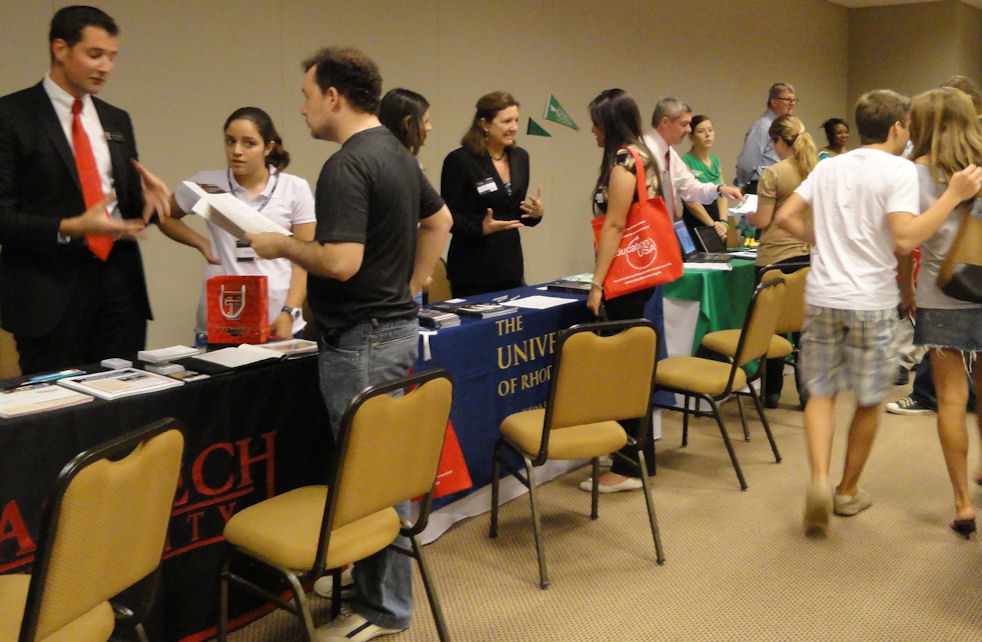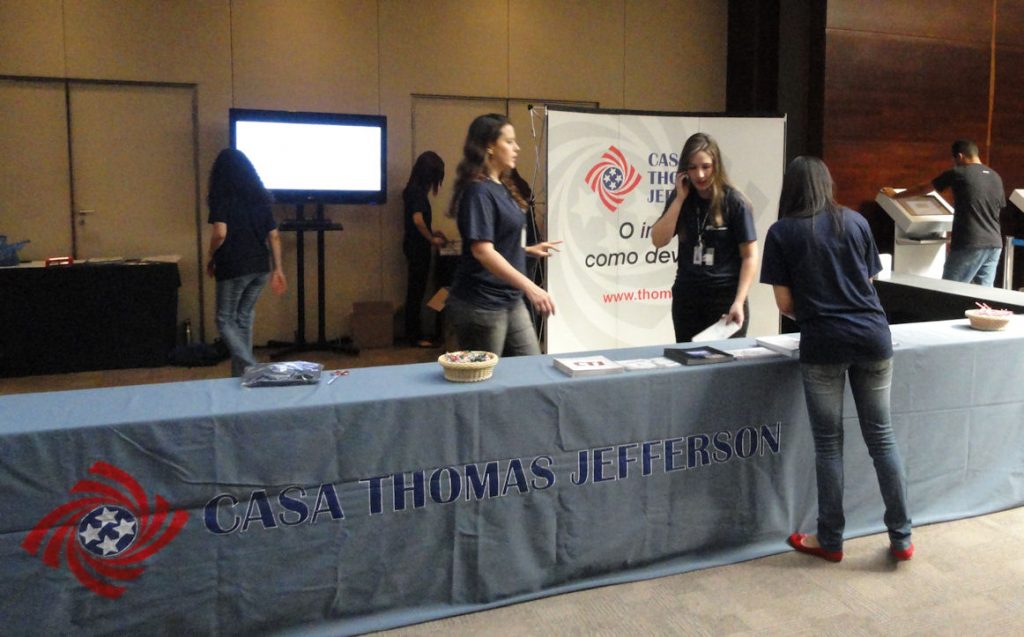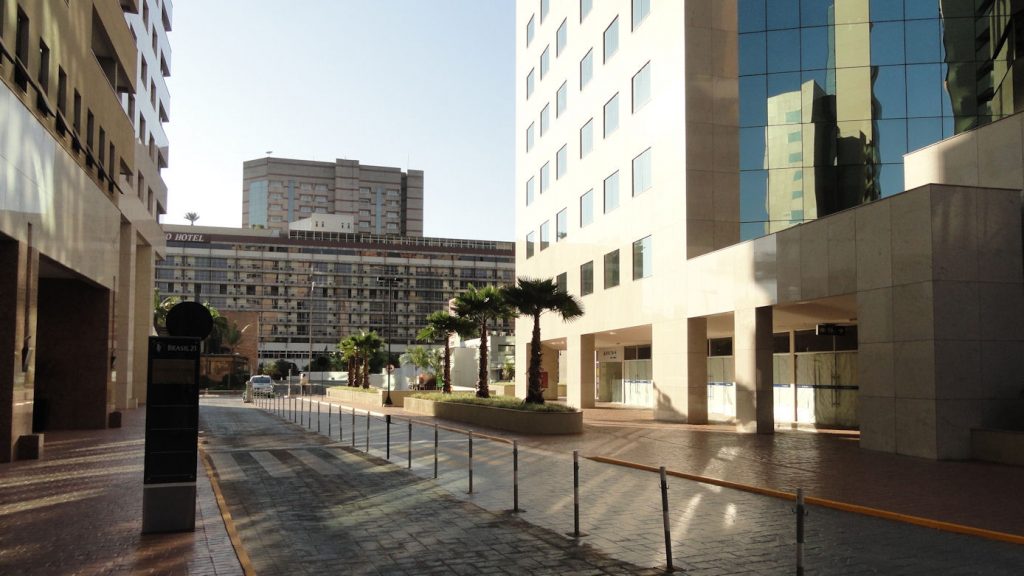
EducationUSA held its first ever educational fair in Brasília. Sixty-six American universities came along with Under Secretary of Commerce for International Trade Francisco Sánchez. This was the largest educational trade mission ever organized by Commerce. So we have a lots of firsts.

A few more facts – Casa Thomas Jefferson organized the fair. Each of the schools pays around $1200.00 for their table and it costs about $35,000.00 to stage the event, so organizers make some money on the fairs that they plow back into educational advising. About 1000 prospective students preregistered the fair and more than 2500 showed up. I don’t know how many students universities actually recruit, but they evidently think it is worth the price of admission and the expense of sending their representatives.
The day started with Denise from CAPES explaining Science w/o Borders to the assembled representatives. Science w/o Borders is starting to resolve itself into a recognizable form. Denise explained that it wasn’t always like this. Last year there was nothing. All the structures were created on the fly. The university reps were very interested in SwB. In fact, that interest goes some way in explaining why such a big group showed up.

Ambassador Shannon and U/S Sanchez officially opened the fair, after which the reps dispersed to their tables where they pretty much stay for the next six or seven hours. You can see what the place looks like in the pictures. It is a profession that requires a strong bladder. The setup here looks the same anywhere in the world. I walked around for a while and talked to dozens of the reps. I tried to hang around only when no potentially paying customers were nearby and left before the biggest crowds converged on the place.
I had a good talk with Jose Santiago, representative of ETS. They have expanded their offer of TOEFL tests to meet the vastly increased demand provoked by SwB.
My pictures show the tables at the fair, Case Thomas Jefferson registration table, U/S Sanchez opening the fair and below is the street outside. I arrived way early. Nobody was there yet and the city was very peaceful.

